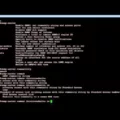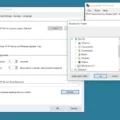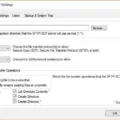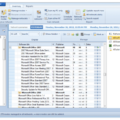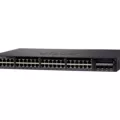When it comes to ensuring the performance of your network, SNMP monitoring is one of the most effective tools available. SNMP, or Simple Network Management Protocol, is an industry-standard protocol that is used for managing and monitoring devices in IP networks. By using SNMP, network administrators can track virtually any data values they specify.
SNMP works by sending messages called protocol data units (PDUs) to devices on the network that support SNMP. These messages are known as Get-Requests and allow administrators to monitor a variety of parameters such as system uptime, CPU usage, bandwidth utilization, memory usage, and much more.
The great thing about SNMP monitoring is that it can be used for both proactive and reactive management of your network infrastructure. Proactively monitoring network devices allows you to detect potential problems before they become major issues while reactively monitoring helps you respond quickly when a problem arises.
When it comes to setting up SNMP monitoring, SolarWinds Network Performance Monitor (NPM) is one of the best options available. NPM makes installing and configuring your system a breeze thanks to its device discovery tool which will locate all nodes on your network and install agent software or instruct existing pre-loaded agents if necessary.
Once everything is set up, NPM allows you to quickly view important performance metrics such as latency, packet loss, errors & discards, CPU & memory utilization, and interface traffic throughput & more in real-time so you can spot any potential problems before they become major issues. You can also set custom thresholds for each monitored parameter so you’ll be notified immediately when something goes wrong.
In addition to this real-time performance data from all your devices, NPM also provides advanced analytics so you can easily identify trends in your environment and make changes accordingly. Plus it integrates with other SolarWinds products such as Application Performance Monitor (APM), Server & Application Monitor (SAM), and Network Configuration Manager (NCM) for even greater visibility into your environment and more detailed reporting capabilities.
Overall, SNMP monitoring provides an efficient way of managing and monitoring IP networks while giving administrators complete control over their environment with minimal effort required on their part. With SolarWinds Network Performance Monitor at the helm of your system’s operations, you’ll have peace of mind knowing that all aspects of your network are running smoothly at all times.

The Use of SNMP
SNMP is used for the management and monitoring of network-connected devices in Internet Protocol networks. It provides administrators with the ability to monitor and manage their networks remotely, as well as allows for automated reactions to certain events or changes within the network. Using SNMP, a network administrator can detect errors or changes in performance, reduce operational costs by automating certain tasks, and customize alerts based on different criteria. Furthermore, SNMP can be used to automatically configure devices within a network, such as routers or switches. This allows administrators to quickly and easily add new devices to their networks without having to manually configure each one individually.
Understanding SNMP and Its Functionality
SNMP (Simple Network Management Protocol) is a protocol used for managing and monitoring devices on IP networks. It works by sending out special messages, called protocol data units (PDUs), to devices that “speak” SNMP. These PDUs contain requests called SNMP Get-Requests. When the device receives this request, it will respond with an SNMP Get-Response packet that contains the requested information.
Using these requests, network administrators can track virtually any data values they specify. This includes information such as CPU usage, memory utilization, system uptime, and so on. The responses are then collected and stored in a network management database where they can be monitored, analyzed, and reported on. This allows administrators to quickly detect problems when they occur and take the necessary steps to fix them before they become major issues. Additionally, SNMP can also be used to configure devices remotely so that changes can be made without having to physically access the device itself.
Finding the Best SNMP Monitor Software
The SolarWinds Network Performance Monitor (NPM) is the best SNMP monitoring software available. It provides an easy-to-use, intuitive interface, and powerful features to help you monitor and manage your network. NPM’s device discovery tool quickly locates, maps, and configures all of the nodes on your network, installing agent software or instructing existing, pre-loaded agents. You can also monitor all of your SNMP devices in real-time, giving you up-to-date information on performance levels. Additionally, NPM allows you to set alerts for when certain thresholds are exceeded, giving you advance warning of potential issues. This comprehensive suite of tools ensures that your network is running at peak performance at all times.
Most Commonly Used Protocol for Monitoring
SNMP (Simple Network Management Protocol) is the most commonly used protocol for monitoring networks. It has been used by network administrators and engineers since the 1980s to monitor, configure, and manage devices on networks. SNMP works by sending out “trap” messages across a network that can be monitored and analyzed for various types of information. This information can include bandwidth usage, system performance metrics, hardware inventory and health, software versions, updates, etc.
SNMP is also highly extensible – there are numerous third-party vendors who have developed their own MIBs (Management Information Bases) that allow users to collect even more detailed data about their networks. Additionally, SNMP can be configured to send alerts when certain thresholds are met – for example, if a device’s CPU usage exceeds a certain percent or if an interface experiences high latency or packet loss.
Overall, SNMP is widely used and well-trusted in the network monitoring space, making it the go-to protocol for many network engineers.
Monitoring SNMP in Windows 10
In order to monitor SNMP in Windows 10, you will need to first turn on the Simple Network Management Protocol feature. To do this, open Control Panel from the Start Menu and select Programs. Then click on Program and features, followed by Turn Windows features on or off. In the list of features that appear, find Simple Network Management Protocol, check the box next to it, and click OK. Once this is done, SNMP will be enabled in Windows 10 and you can monitor it accordingly.
Conclusion
In conclusion, SNMP is a powerful networking protocol that can be used to effectively manage and monitor the performance of network-connected devices. Through the use of SNMP Get-Requests, network administrators can track virtually any data values they specify. SolarWinds Network Performance Monitor (NPM) is an easy-to-use SNMP management tool that simplifies the installation process, allowing for quick deployment and seamless configuration of all nodes on your network. With NPM, administrators can easily monitor their networks 24/7 and be alerted when any issues arise.

